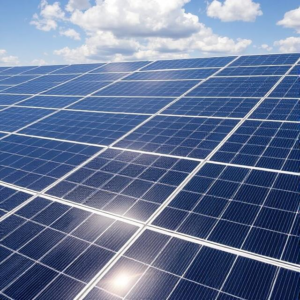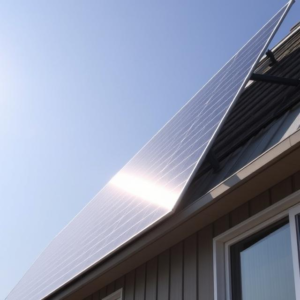Renewable Energy in Malaysia: A Path to Energy Security
In 2018, Malaysia transitioned from being a net energy exporter to a net importer of power generation fuel, marking a pivotal moment in its energy landscape. With natural gas demand expected to rise by 5.2% annually until 2050, the country faces challenges in maintaining energy security and advancing its net-zero journey.

Relying on imports could lead to significant economic costs and undermine its progress. However, by leveraging its vast untapped solar power potential, Malaysia can improve grid stability and connectivity, generate substantial savings, and achieve power sector self-sufficiency. This shift would also accelerate its transition to net zero, ensuring a sustainable future.
From my experience in the energy sector, I’ve observed that countries investing in renewable energy often reap long-term benefits. For instance, solar power not only reduces reliance on fossil fuels but also drives innovation and job creation. Malaysia’s solar market is already showing promise, with solar generation costs dropping significantly. By focusing on grid stability and connectivity, the country can unlock even more potential, ensuring a sustainable and secure energy future.
Malaysia Needs to Tap Into Its Solar Power Potential
While solar power’s decreasing generation costs offer a promising future, Malaysia needs more ambitious targets to maximise the prospective economic gains from its deployment.
According to the National Energy Transition Roadmap (NETR), the country aims to achieve a 29% share of renewables in the generation mix by 2035, with fossil fuels still accounting for 71%. Malaysia plans to phase out 50% of its coal plants by 2035 and nearly all by 2045, targeting 70% renewable capacity in the energy mix by 2050. However, Ember estimates that solar power will realistically contribute only 52% of the power generation mix by 2050, with gas making up the remaining 48%. This reliance on gas could leave Malaysia’s power sector vulnerable to fuel price volatility and domestic reserve depletion.
As of 2023, coal and gas accounted for 43% and 37% of total generation, respectively, while solar contributed just 1.7%. To address this, scaling up clean energy, particularly solar and wind, can protect the country from high power costs, energy insecurity, and unreliable supply. Ember suggests a viable and technically feasible strategy: using solar power to meet daytime demand and addressing non-solar hours by utilising hydropower and building more storage facilities over time.
Progress Towards Renewable Energy Goals

A recent report by Global Data highlights Malaysia’s progress toward its 40% renewable energy target by 2035, with hydropower dominating the clean energy mix at 69.9%. However, Ember emphasizes the need to increase solar power generation fourfold to align with a 1.5°C-compatible scenario.
Despite having 268 GW of untapped solar potential, the National Energy Transition Roadmap (NETR) plans to utilize only 14 GW by 2035, underscoring the urgency to improve clean energy targets. The ASEAN Climate and Energy Project suggests that renewables should constitute 99.5% of electricity generation by 2050, with solar responsible for 61%. IRENA warns that Malaysia must adopt more ambitious targets to achieve a fully renewable-powered future by 2050, with solar as the dominant source.
Rising Energy Demand and Investment Needs
The growing energy demand from Malaysia’s data centre industry, forecasted to grow by 13.9% annually until 2029, presents both a challenge and an opportunity. Nadhila explains that this demand can drive the adoption of solar power, ensuring a stable electricity supply while aligning with the clean power agenda.
Scaling solar power to 17.1 GW by 2030 would require USD 10.8 billion in investments, with total energy transition investments needing to reach USD 415 billion by 2050. While clean energy investments are increasing, they remain below the levels suggested by IRENA.
Policy Support and Investment: Key to Success
Malaysia has already seen success with mechanisms like the Renewable Energy Certificate (REC), Green Electricity Tariff (GET), and the Net Metering Scheme (NEM), which have driven solar power deployment. The Corporate Green Power Program (CGPP) further encourages private sector participation. However, challenges like solar intermittency and outdated grid infrastructure must be addressed. IRENA recommends shortening project approval times, improving financing mechanisms, and phasing out fossil fuel subsidies, which cost 12% of GDP annually.
The Role of Battery Storage and Grid Modernization
Complementing solar with battery energy storage systems (BESS) and grid modernization is essential to avoid issues like power curtailment, as seen in Vietnam. Ember stresses the importance of grid interconnections between regions like Sarawak and Peninsular Malaysia to enhance stability and share renewable resources. Streamlining bureaucratic processes and introducing incentives for private sector involvement are crucial for accelerating Malaysia’s decarbonisation journey.
With rapidly decreasing technology costs, solar power and battery storage offer a viable pathway for Malaysia to decouple from fossil fuels, improve energy security, and meet its net-zero target. By prioritizing grid modernization, policy support, and private sector engagement, Malaysia can position itself as a regional leader in the green energy transition.